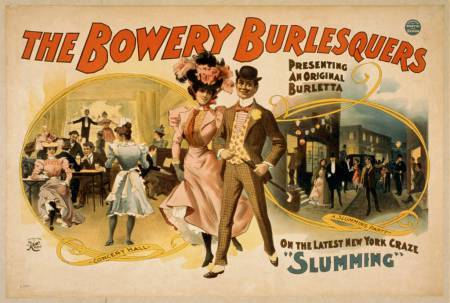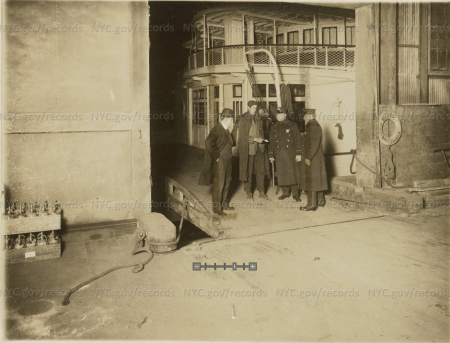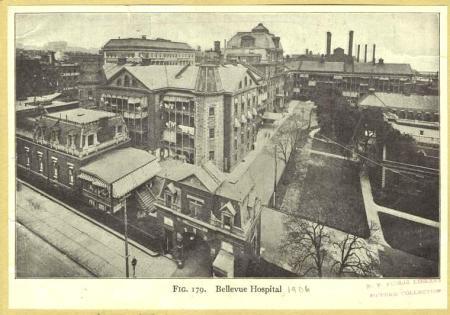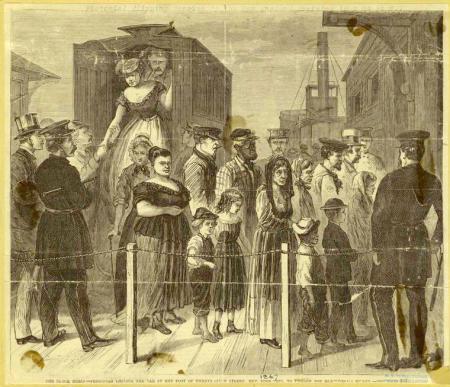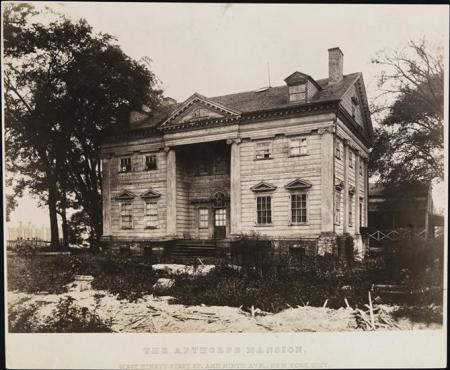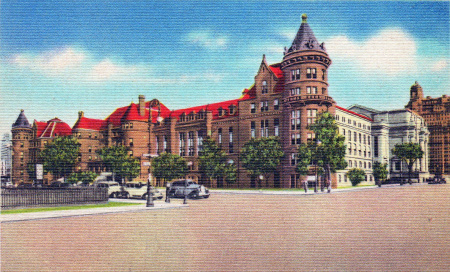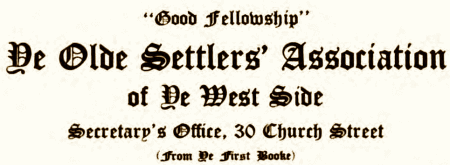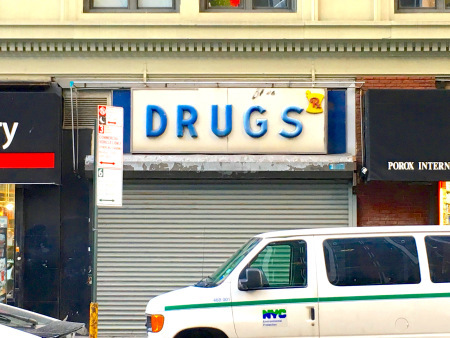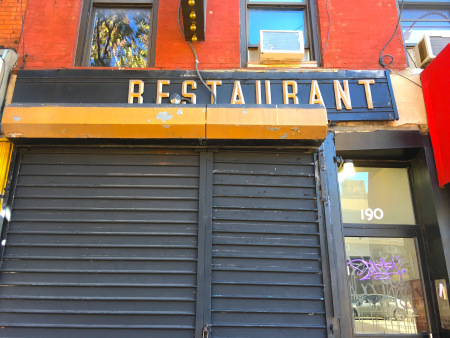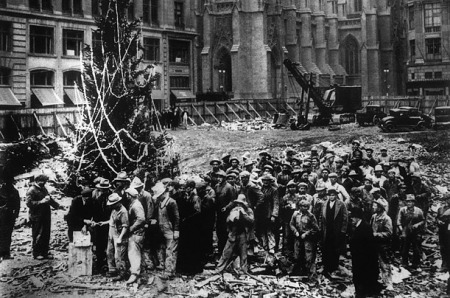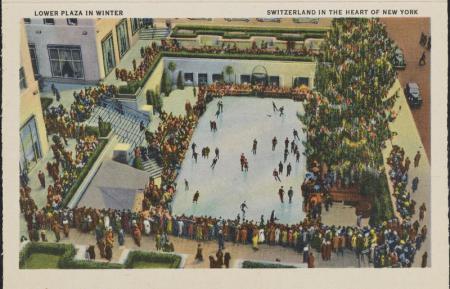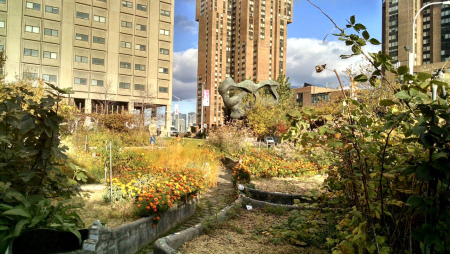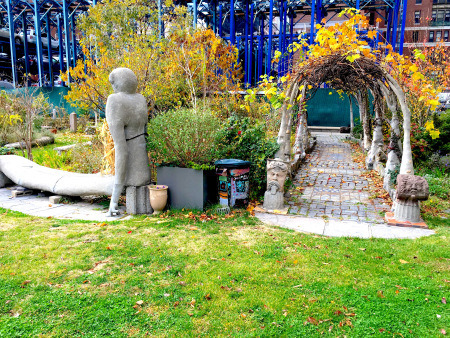Esther Crain's Blog, page 137
December 19, 2016
Santa as we know him was invented in New York
New Amsterdam’s 17th century colonists celebrated “Sinte Klaas” every December 6. The “jolly old elf” who drops toys down chimneys dates to 1823, when “A Visit From St. Nicholas” was published anonymously in an upstate newspaper.
But the Santa we know today was refined and modernized by Harper’s Weekly illustrator Thomas Nast, whose first depiction of a gift-giving, rotund father figure was published during the December 1862 holiday season, with Civil War raging.
“Nast’s Santa appears on the cover of the paper in an illustration titled ‘Santa Claus in Camp.’ states a website called Civil War Profiles.
“Nast drew a patriotic Santa dressed in striped pants and a coat covered with stars sitting on his sleigh beneath a waving American flag. Two drummer boys in the foreground of the sketch appear fascinated with a jack-in-the-box toy. One soldier is shown opening his box to find a stocking stuffed with presents, while another soldier holds up the pipe he received as a present.”
To make it even clearer which side Santa took in the War Between the States, Nast drew Santa holding a wooden effigy of Confederate president Jefferson Davis by a rope.
This cover illustration is one of two that feature Santa Claus on a sleigh in that January 3, 1863 issue. Inside is a more sentimental Nast drawing.
[image error]In one panel, a young mother prays for her soldier husband’s safe return from war. In the second panel, the husband is sitting beside a fire, ostensibly thinking of his family.
And atop the roof is a small bearded man, his reindeer-drawn sleigh parked beside him as he looks down the chimney.
Santa Claus, electric Christmas tree lights, the first tree lighting in a park—New York pioneered many of the holiday celebrations we take part in today, as The Gilded Age in New York, 1870-1910, explains.


December 12, 2016
Slumming it with the 1898 Bowery Burlesquers
If only we could go back in time and buy tickets for this musical theater number, which poked fun at the new pastime of slumming—upper class New York curiosity seekers checking out the Bowery and other down-and-out city neighborhoods.
The Bowery Burlesquers performed way off-Broadway theater in the 1890s, and audiences couldn’t get enough of it.
[Poster: LOC]


The missing terra cotta bank clock on Avenue C
It’s a wonderful burst of color among the tenements and occasional weedy lot on Avenue C: a three-story 1920s building with an elaborate terra cotta and tile ornament above the entrance.
Painted in bright green, blue, red, and orange, the ornament—flanked by urns and adorned with an eagle—was supposed to have a clock in the center.
 For years its been empty, a mosaic-like place holder for a long gone neighborhood time piece.
For years its been empty, a mosaic-like place holder for a long gone neighborhood time piece.
What’s the story? This was a branch of The Public National Bank of New York, built in 1923 at the northeast corner of Avenue C and Seventh Street, according to a 2008 Landmarks Preservation Committee Report.
Back then, this was a thriving, busy bank in a typical New York working class neighborhood, with “tellers in the monumental banking floor on the ground story,” as the Landmarks report put it.
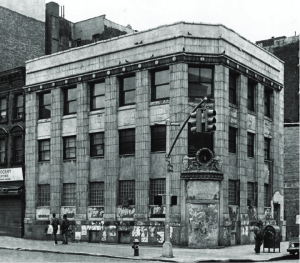 But times and neighborhoods change, and by the 1950s, it was being used as a nursing home.
But times and neighborhoods change, and by the 1950s, it was being used as a nursing home.
In the 1970s, the building passed through various hands before being made over into apartments in the 1980s (at right, in 1983)
And the missing clock? That’s still a question mark.
Unfortunately, since it’s been MIA so long, it seems doubtful that anyone affiliated with the building has plans to put a replacement inside the empty space.
So it’s left to us to imagine (with the help of old photos of the clock, above) the lost timepiece.
Think of the neighborhood residents who, in an age before smart phones and digital watches, relied on street clocks to keep appointments and know when the next streetcar would appear.
[Third photo: Landmarks Preservation Committee report; fourth photo: 

East 26th Street: New York’s “Misery Lane”
It was in a part of Manhattan, at the edge of a poor neighborhood of tenements and groggeries, where no one wanted to end up.
But thousands of city residents did found themselves on Misery Lane, as the short stretch of East 26th Street between First Avenue and the East River was known in the turn-of-the-century city.
This block was a dumping ground for the sick, alcoholic, and mentally ill, who sought treatment at Bellevue Hospital, which bordered East 26th Street (above).
Some New Yorkers had a sense of humor about it, as this rhyme from a 1917 medical magazine demonstrates:
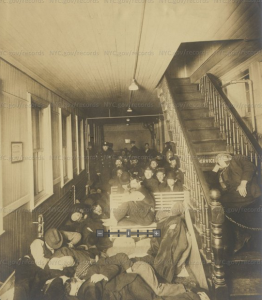 T.B., aneurysm, and gin-drinker’s liver;
T.B., aneurysm, and gin-drinker’s liver;
Tabetics, paretics, plain drunk, and insane;
First Avenue’s one end, the other’s the river;
Twenty-sixth Street between they call Misery Lane!
Criminals showed up on Misery Lane as well.
Men and women convicted of a range of crimes were deposited via police wagon on a dock known as Charities Pier at the end of East 26th Street (below).
From there, they were ferried to the workhouse and penitentiary across the East River to Blackwell’s Island to serve their time.
The poor also stood in line at Charities Pier. Unable to afford rent, food, coal, and other necessities, their last resort was the Blackwell’s Island almshouse.
Misery Lane was the site of the Municipal Lodging House, built in 1909 to house mostly homeless, often derelict men (top and second photos), but also women and children.
 With the city morgue on 26th Street as well, Misery Lane was the last place New York’s unknown dead went before being shipped to Potter’s Field on Hart Island.
With the city morgue on 26th Street as well, Misery Lane was the last place New York’s unknown dead went before being shipped to Potter’s Field on Hart Island.
And when mass tragedy struck the city, Misery Lane was involved as well.
Bodies found after the General Slocum disaster were brought here to be identified—as were the horribly burned corpses of Triangle Fire victims (above right).
Misery Lane is long gone, of course.
Today, 26th Street ends not at a charity-run pier but with a lovely view of the deceptively placid river . . . all the way to Blackwell’s, er, Roosevelt Island (above).
[Top and third photos: NYC Municipal Archives; second and fourth images: NYPL; fifth image: LOC/Bain Collection]


December 4, 2016
Christmas sidewalk vendors of Sixth Avenue
Sixth Avenue along Ladies Mile was a prime shopping district during the 1902 holiday season, with enormous emporiums like Siegel Cooper, Hugh O’Neill, and Macy’s offering Christmas windows, in-store Santas, and deals galore.
A smart vendor could make some cash selling his wares there, as this tree or wreath vendor appears to be doing.

Hey, isn’t that the house of worship once known as the Limelight? These New Yorkers would have called it the Church of the Holy Communion.
Christmas shopping is pretty much the same as it was 100 years ago, as these additional photos reveal.


Who killed this pretty East Side model in 1937?
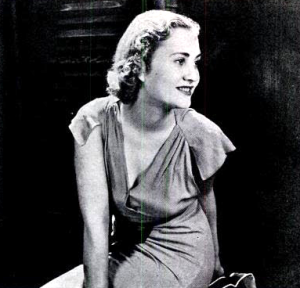 It was a gruesome scene inside the fourth floor apartment at 316 East 50th Street on Easter afternoon, 1937.
It was a gruesome scene inside the fourth floor apartment at 316 East 50th Street on Easter afternoon, 1937.
Veronica Gedeon, a 20-year-old model, was found naked and strangled to death on a bed; her mother, Mary, had also been strangled. Mary’s clothes were off as well, her body under the same bed.
Newspapers reported that Mary had been “ravished.” Meanwhile, a deaf bartender who had rented another room as a boarder was also dead in his bed, stabbed multiple times.
Only Mary’s pet pekinese was spared, according to the Brooklyn Daily Eagle on March 29.
Police from the 17th precinct rushed to the home after Joseph Gideon, the estranged husband of Mary and father of Veronica, came upon it when he paid a holiday visit to the apartment, which Mary ran as a boardinghouse.
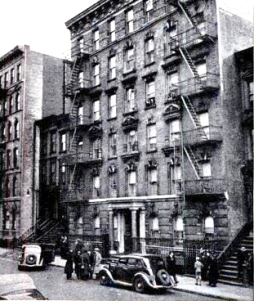 Cops questioned Joseph, but nothing tied the immigrant upholsterer to the murders. They picked up other suspects who were cleared.
Cops questioned Joseph, but nothing tied the immigrant upholsterer to the murders. They picked up other suspects who were cleared.
While the police tried to solve the crimes, the press focused on Veronica, known as Ronnie, according to Undisclosed Files of the Police: Cases From the Archives of the NYPD.
Her modeling work wasn’t high fashion. The pretty blonde posed sometimes nude for ads, artists, and detective magazines.
She had a fiance, but the night of the murders, she was out with another man and reportedly returned to the East 50th Street apartment intoxicated.
Her modeling work and love life were mined for clues; even pages of her diary were printed in the papers.
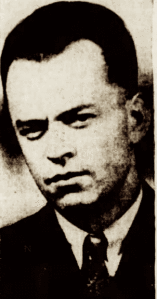 Thanks to this focus, the public didn’t shy away from blaming Veronica for the crimes. “The young model probably messed around with too many men . . . she should have been more particular with her boy friends,” commented on Brooklyn resident in another Eagle story.
Thanks to this focus, the public didn’t shy away from blaming Veronica for the crimes. “The young model probably messed around with too many men . . . she should have been more particular with her boy friends,” commented on Brooklyn resident in another Eagle story.
The real killer, however, wasn’t interested in Veronica—he was infatuated with her married older sister, Ethel.
Robert Irwin (right), a sculptor and “sex mad” divinity student became obsessed with Ethel when he boarded with the family in another apartment the Gedeons had on East 53rd Street.
A massive hunt for Irwin consumed the NYPD. “The city’s entire detective force, 1950 strong, armed with photographs and thumbnail descriptions of the vanished sculptor, probed through cheap Bowery lodging houses and saloons, through hospital wards and missions for down-and-outers,” wrote the Eagle on April 6.
Caught in the Midwest, Irwin pleaded guilty to second-degree murder.
He calmly told officials the story: he “arrived at the Gedeons’ apartment on Holy Saturday night,” stated a New York Daily News article from 2008 that looked back on the crime.
“He and Mary Gedeon chatted amicably for some time, but when Irwin pried for gossip about Ethel, Mrs. Gedeon told him it was time to let go of the imagined romance. Irwin snapped.
 ‘The room was blue with death,’ he later said. ‘There wasn’t anything I could do.'” He killed Mary first, then murdered Veronica when she came home at 3 a.m. The boarder was stabbed to death as he slept.
‘The room was blue with death,’ he later said. ‘There wasn’t anything I could do.'” He killed Mary first, then murdered Veronica when she came home at 3 a.m. The boarder was stabbed to death as he slept.
Sentenced to 139 years in prison amid controversy about his mental state, Irwin was eventually moved to Matteawan, a state institution for the criminally insane, where he died in 1975.
[First and third photos: Life magazine, April 12, 1937; second photo: Find a Grave; third and fourth photos: Brooklyn Daily Eagle; fifth photo: Getty images]


Meet the original Upper West Side old-timers
Think wistfully about the Upper West Side of the past, and enormous rent-stabilized apartments, independent bookstores, and grittier streets might come to mind.
But for the members of a group called Ye Olde Settlers’ Association of Ye West Side, the neighborhood they mourned was a bucolic one of farms and country estates.
 That’s because the Ye Olde Settlers were the original Upper West Side old-timers.
That’s because the Ye Olde Settlers were the original Upper West Side old-timers.
The 80 founders had lived in small villages like Bloomingdale and Harsenville in the 19th century. As the city’s population ballooned, they watched their stretch of Manhattan get carved up, paved over, and urbanized—all within a few decades.
And just like longtime New Yorkers do today, these senior citizens enjoyed getting together to talk about the good old days in the ‘hood.
“Once a year that young but thoroughly New York organization known as Ye Olde Settlers’ Association of Ye West Side holds a dinner and induces many of its members to give reminiscences of the days when houses were few, apartments were none, and transportation on the West Side was chiefly accomplished by old-fashioned horse cars on Eighth Avenue…” wrote the New York Times in January 1915.
What exactly did they gather to remember? The Apthorp farm for one, with its stately mansion. In 1908, the Apthorp apartment residence replaced the farm on West End Avenue and 78th Street.
They also recalled Manhattan Square (created before Central Park at 77th Street, now the site of the Museum of Natural History), mayor Fernando Wood’s estate (Broadway at 76th Street), and the Furniss estate (Riverside Drive and 100th Street).
Formed in 1911, Ye Olde Settlers published yearbooks (with some fascinating historical tidbits) into the 1920s. But like the West Side of old, the group died out without ceremony.
[Top photo: Furniss Estate, MCNY, x2010.11.14452; second image: New York Times, March 24, 1912; third image: Apthorp Mansion, MCNY, x2010.11.6201; fourth image: New York Times, January 24, 1915; sixth image: Ye Old Settlers’ yearbook, 1921]


November 27, 2016
Feel the nostalgia for these Manhattan store signs
Maybe we’ve hit the commercial real estate saturation point, or maybe it’s just a coincidence.
But a lot of vintage store signs seem to have come back into view this year…and have yet to be covered up again by the signage of a new store tenant.
Holiday shopping season is the perfect time to view the above sign for 1980s Upper West Side store The Last Wound-Up, which specialized in new and retro toys and gadgets powered by a wind-up knob.
The shop was located on Columbus Avenue and 73rd Street. (Thanks to ENY reader Amy for the snap.)
Before Duane Reade colonized Manhattan, there were pharmacies like this one, spotted on Eighth Avenue in Midtown.
It has no name and no frills—but look at that wonderful 1970s-yellow pestle and mortar icon above the entrance!
Speaking of no frills, you’ve got to love this sign, on First Avenue in the East Village. The store recently housed an eatery called Tree. But “restaurant” is better, no?


This is the first Rockefeller Center Christmas tree
It made its debut on Christmas Eve 1931, in the muddy pit that would one day become Rockefeller Center.
A group of mostly Italian immigrant hardhats knocking down the brownstones on the eventual site of 30 Rock chipped in to buy it—a very humble 18-foot balsam.
 They put up the skinny tree inside the construction site and draped it in tin cans, paper, and tinsel—as well as traditional cranberry garlands and foil from blasting caps used during dynamiting, according to a 2015 New York Times piece.
They put up the skinny tree inside the construction site and draped it in tin cans, paper, and tinsel—as well as traditional cranberry garlands and foil from blasting caps used during dynamiting, according to a 2015 New York Times piece.
Public Christmas trees in parks had been a thing since the first one graced Madison Square Park in 1912.
But the workers in the pit were honoring more than just the holiday (and the fact that they had jobs during this Depression year).
They were celebrating because it was payday, with each man receiving his wages in an envelope beside their tree.
Two years later, with Rockefeller Center completed, the owners decided to erect and decorate a real Christmas tree, a 65-footer that went up outside the then–RCA building.
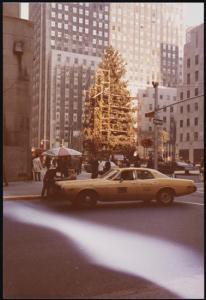 Every year since, the holiday tree has delighted national crowds during its annual lighting ceremony and has been visited by hordes of thousands.
Every year since, the holiday tree has delighted national crowds during its annual lighting ceremony and has been visited by hordes of thousands.
In its 85-year history, the tree has had its disruptions. Thanks to a war-mandated blackout, the two trees at 30 Rock weren’t lit in 1944.
In 1979, in an effort to bring attention to the American hostages held in Iran at the time, two men climbed the tree. One hung on for 80 minutes chanting “Free the 50.” (He was given a summons for trespassing.)
In 1971, with recycling catching on, the tree was turned into mulch for the first time—a tradition that continues once the tree has completed its duty come January.
[Top photo: AP, 1931; second photo: MCNY 1945, x2010.11.8801; third photo: MCNY, 1973, x2010.11.8796; fourth image: MCNY, 1945, F2011.33.2122Q]


A hidden magical garden behind the FDR Drive
Considering the density of its streets, New York is a city with a surprising number of hidden gardens: some in churchyards, others created on empty lots, and some designed to mask garages and other unpretty structures.
But few of these green spaces are as hard to get to as the quarter-acre oasis between the FDR Drive and First Avenue, behind the cluster of buildings that make up Bellevue Hospital Center.
It’s the Bellevue Sobriety Garden, a strangely magical place that mixes sculpture, trees, flowers, mosaics, doll parts, cement, and foliage.
Started by a Bellevue psychiatrist in 1989 and tended to by recovering addicts in the hospital’s Chemical Recovery Program, this isn’t your typical serene green space.
You won’t find many tourists or crowds here; it’s accessible via a lonely stretch of 26th Street beyond First Avenue or from an FDR Drive off ramp. And it’s not a landscaped masterpiece; grass can be patchy, and it has a wild, overgrown look to it.
But that’s all part of its whimsical and imaginative charm, a garden straight out of an artist’s fairy tale. It’s not exactly a secret, but if you visit, you’ll feel like you stumbled into a New York you never knew.
The entrance, flanked by enormous statues and pieces of old buildings, welcomes visitors while encouraging them not to steal the veggies and fruits grown here in warmer months.
Slender cobblestone paths take you past patches of flowers to benches, trellises, a wooden bridge, and a tiny gingerbread-like house. Along the way you’ll walk past mosaics and sculptures of sheep, dogs, pigs, and a snake.
Take a walk through it, and you’ll forget about the parking lot next door and the roaring traffic on the FDR Drive.
Back in 2014, someone came in and vandalized the garden, defacing its statues. By the looks of things now, on a warmish autumn day, everything seems back in order—a peaceful and magical respite not very accessible to the average New Yorker.



